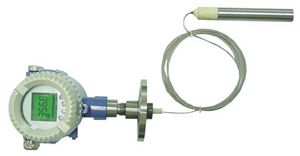Difference between revisions of "Level Meters"
| Line 1: | Line 1: | ||
[[Category:Meters, Gauges]]{{Knoppen}} | [[Category:Meters, Gauges]]{{Knoppen}} | ||
[[File:Level Meter.jpg|thumb|right|Level Meters]] | [[File:Level Meter.jpg|thumb|right|Level Meters]] | ||
The | The bulk solids industries place high requirements on level measurement. Besides instruments of traditional technologies like differential pressure '''Level Meters''', there are also level meters of radar, magnetostrictive, and magnetic float, etc. applied extensively. | ||
The | The bulk solids industry is an important segment where level meters witness high growth over recent years. As China improves the industrial technologies of extracting and transporting oil, some new high-end level meters will have a wide application in this segment. | ||
One of the problems with a significant number of technologies is that they are installed through a nozzle and are exposed to products. This can create several problems, especially when retrofitting new equipment to vessels that have already been stress relieved, as it may not be possible to fit the instrument at the location required. Also, as the measuring element is exposed to the contents within the vessel, it may either attacked or coat the instrument causing it to fail in service. One of the most reliable methods for measuring level is using a nuclear gauge, as it is installed outside the vessel and doesn't normally require a nozzle for bulk level measurement. The measuring element is installed outside the process and can be maintained in normal operation without taking a shutdown. Shutdown is only required for an accurate calibration. | One of the problems with a significant number of technologies is that they are installed through a nozzle and are exposed to products. This can create several problems, especially when retrofitting new equipment to vessels that have already been stress relieved, as it may not be possible to fit the instrument at the location required. Also, as the measuring element is exposed to the contents within the vessel, it may either attacked or coat the instrument causing it to fail in service. One of the most reliable methods for measuring level is using a nuclear gauge, as it is installed outside the vessel and doesn't normally require a nozzle for bulk level measurement. The measuring element is installed outside the process and can be maintained in normal operation without taking a shutdown. Shutdown is only required for an accurate calibration. | ||
Latest revision as of 01:03, 26 February 2013
The bulk solids industries place high requirements on level measurement. Besides instruments of traditional technologies like differential pressure Level Meters, there are also level meters of radar, magnetostrictive, and magnetic float, etc. applied extensively.
The bulk solids industry is an important segment where level meters witness high growth over recent years. As China improves the industrial technologies of extracting and transporting oil, some new high-end level meters will have a wide application in this segment.
One of the problems with a significant number of technologies is that they are installed through a nozzle and are exposed to products. This can create several problems, especially when retrofitting new equipment to vessels that have already been stress relieved, as it may not be possible to fit the instrument at the location required. Also, as the measuring element is exposed to the contents within the vessel, it may either attacked or coat the instrument causing it to fail in service. One of the most reliable methods for measuring level is using a nuclear gauge, as it is installed outside the vessel and doesn't normally require a nozzle for bulk level measurement. The measuring element is installed outside the process and can be maintained in normal operation without taking a shutdown. Shutdown is only required for an accurate calibration.
